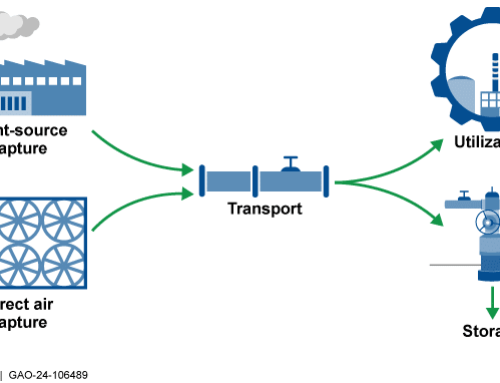On October 25, the Senate Committee on Energy and Natural Resources subcommittee on Public Lands, Forests and Mining held a hearing to discuss 19 proposed bills, including several addressing forest and wildfire management issues. Witnesses were Ms. Nada Wolff Culver, Principal Deputy Director, Bureau of Land Management; Ms. Jacqueline Emanuel, Associate Deputy Chief, National Forest System, U.S. Forest Service (USFS); and Mr. Mark S. Boshell, Deputy Director, Utah Public Lands Policy Coordinating Office.
The federal government, and federal taxpayers, have a vested interest in addressing the wildfire crisis. Several of the bills considered during the hearing, including S. 2867 Promoting Effective Forest Management Act of 2023 and S. 3062 Small-diameter Timber and Underutilized Material Act of 2023, address hazardous fuels reduction. In Taxpayers for Common Sense (TCS)’s recent wildfire report, Clearing the Smoke, TCS highlighted how decades of misplaced priorities and aggressive federal fire suppression policy have left taxpayers and communities more vulnerable to wildfire threats. Our report recommended establishing constructive metrics to evaluate the success of programs like hazardous fuel reduction. Metrics used by S. 2867, like acres treated or thinned, may inflate real risk reduction instead of metrics that can more accurately gauge progress, like the number of at-risk communities protected. The Wildland Fire Mitigation and Management Commission, established by Congress to give wildfire policy recommendations, concurred that performance metrics like acres treated or timber volume output “incentivize treating areas that can be reached at low cost rather than those with the highest risk or highest restoration potential.”
Members of the subcommittee offered remarks on the bills they introduced, and the witness panel commented whether their agencies supported the bill or not. Below is a list of relevant bills addressing forest and wildfire management issues:
S.1719 – FIRESHEDS Act:
- Introduced on 5/18/2023 by Senator Risch (R-ID)
- This bill would:
- Require the Secretary of the Interior of Secretary of Agriculture to establish a fireshed management area at the request of the governor of a state.
- Fireshed management areas must be ranked in the top 10 percent of wildfire exposure according to USFS fireshed risk exposure assessments and cannot be in the National Wilderness Preservation System, in an inventoried roadless area, or another area where timber harvesting is prohibited by federal statue.
- After an initial assessment, the federal government would be obligated to create fuel breaks and fire breaks, conduct hazardous fuels management, conduct prescribed burns, and/or remove dead or dying trees in the fireshed management area.
- Designated fireshed management areas would be exempt from the preparation of an environmental assessment or an environmental impact statement under the National Environmental Policy Act of 1969 (NEPA).
- Require the Secretary of the Interior of Secretary of Agriculture to establish a fireshed management area at the request of the governor of a state.
According to testimony, the Bureau of Land Management opposes the broad categorical exclusion for fireshed management projects and the prohibition of court injunctions. The Bureau of Land Management also expressed concerns with the 90-day deadline for completing the assessment.
U.S. Department of Agriculture (USDA) testified that it does not support the bill as written either. It is concerned that Tribes are not included in the decision-making process and that the criteria for designating fireshed management areas are both unnecessarily restrictive and may overriding existing land management objectives in an effort to attract federal funding.
S.1764 – Western Wildfire Support Act of 2023:
- Introduced on 5/31/2023 by Senator Cortez-Masto (D-NV)
- This bill would:
- Authorizes appropriations of:
- $3 billion for ground-based firefighting operations and $500 million for firefighting aircraft annually to the Department of Agriculture (USDA).
- $1 billion for ground-based firefighting operations and $500 million for firefighting aircraft annually to the Department of the Interior (DOI).
- $200 million each to USDA and DOI to fund the Firewise Program, the Fire-Adapted Communities Learning Network, and grants to community wildfire protection or vegetation management programs.
- An amount less than $100 million annually to USDA to fund rehabilitation projects.
- Establish:
- Spatial fire management plans for each unit of Federal land with more than 10 acres of burnable vegetation by September 30, 2026.
- A volunteer wildland fire training program.
- A cost-share grant program to help state or local governments purchase slip-on tank and pump units.
- The Theodore Roosevelt Genius Prize for the management of wildfire-related invasive species.
- A study on the effects of drone incursions on wildfire suppression.
- A study on wildfire detection equipment technology.
- Require reimbursements to state or federal agencies for the costs of fires caused by military training or other Department of Defense activities.
- Expedite placement and permitting of wildfire detection equipment.
- Provide funding for each state to operate 50 single air tankers.
- Provide funding for states to create websites with information on post-fire recovery funding and resources.
- Authorizes appropriations of:
According to testimony, the Bureau of Land Management supports the intent and would propose technical modifications, including addressing challenges associated with the proposed timeline for spatial fire management plans.
USDA testified that it supports the authorization of appropriation of up to $100 million per year for rehabilitation projects, the expedited placement and permitting of wildfire detection equipment, and the study on wildfire detection equipment technology. USDA expressed concerns that the creation of an additional budget subaccount would “constrain flexibility in adjusting the program throughout the year.” USDA would like to work with the Committee on technical suggestions and clarifying edits to several sections.
S.2132 – Catastrophic Wildfire Prevention Act of 2023:
- Introduced on 6/22/2023 by Senator Lee (R-UT)
- This bill would:
- Establish a pilot program to create pre-fire-suppression stand density indexes for at least 8 areas of the National Forest System in the western U.S. The USFS would then use the pre-fire-suppression stand density index as a benchmark for restoration projects, stewardship projects, mechanical hazardous fuels reduction, and/or timber harvesting.
The Bureau of Land Management did not provide any comments on this bill during the hearing.
USDA testified that it supports several of the goals of the bill and recommends several technical suggestions and clarifying edits.
S.2151 – Utah Wildfire Research Institute Act of 2023:
- Introduced on 6/22/2023 by Senator Lee (R-UT)
- This bill would:
- Establish an Institute in Utah to “promote the use of adaptive ecosystem management to reduce the risk of wildfires, and restore the health of forest and woodland ecosystems.” Current institutes of this nature exist in Arizona, New Mexico, and Colorado.
According to testimony, the Bureau of Land Management supports the goal of the bill and offered no specific recommendations or criticisms.
USDA testified that it supports the goal of the bill and would like to work with the Committee to make additional changes to the underlying authority.
S.2867 – Promoting Effective Forest Management Act of 2023:
- Introduced on 9/20/2023 by Senator Barrasso (R-WY)
- This bill would:
- Establish annual mechanical thinning targets for acres commercially and pre-commercially thinned for the National Forest System and public lands for fiscal year (FY) 2024 and every year after.
- Targets for FY2024 cannot be less than the average number of areas thinned in FY2017-2021. The minimum target increased in FY2026 and again in FY2028.
- The Secretary of the Interior of Secretary of Agriculture would assign annual acreage targets for mechanical thinning on National Forest System land and public lands by state or region.
- Publish detailed information on the number of acres treated for hazardous fuel reduction.
- Prohibit agency publications or the President’s budget from including acres of land on which hazardous fuels treatments were treated or needs to be treated more than once in reporting on hazardous fuels reduction progress.
- Instead, the number of acres where final treatment effectively mitigated wildfire risk would need to be included.
- Establish and implement a strategy to meet wildlife habitat goals in existing land management plans or resource management plans.
- Require the Secretary to only carry out regeneration harvests in mature forests – when a forest has generally reached the culmination of mean annual increment of growth.
- Establish a pilot program to conduct research on and evaluate wetland and riparian restoration techniques.
- Establish a pilot project on the experimental forests and ranges managed by the Forest Service to evaluate biologically driven restoration.
- Develop a strategy to increase opportunities to utilize livestock grazing as a wildfire mitigation strategy.
- Develop a logging workforce training program.
- Provide low-interest loans or loan guarantees for the acquisition of mechanized machinery intended to decrease injuries in the logging workforce, using some of the $400 million made available in the Infrastructure Investment and Jobs Act (IIJA) for financial assistance to facilities that use byproducts from ecosystem restoration projects.
- Increases the break-in-service period – a voluntary break in which wildland firefighters forfeit previously made contributions or eligibility for firefighter retirement – from 3 days to 9 months.
- Set a maximum government housing rent of 40 percent of the pre-tax salary for wildland firefighters.
- Set a maximum relocation payment of $100,000 for federal wildland firefighters.
- Develop a “Growing in Place” program to provide incentives for employees to gain experience and skills without relocating.
- Require the Secretary to use a streamlines authority for environmental review within 3 years of enactment of the act.
- Establish annual mechanical thinning targets for acres commercially and pre-commercially thinned for the National Forest System and public lands for fiscal year (FY) 2024 and every year after.
According to testimony, the Bureau of Land Management has concerns with the requirement to increase mechanical thinning, how to report hazardous fuels treatment acres that have been treated more than once, the lack of a post-fire rest from livestock grazing, and limiting DOI and USDA’s ability to define “old growth.” The Bureau of Land Management generally supports the wetland and riparian restoration pilot program and efforts to provide additional housing assistance to wildland firefighters.
USDA testified that it supports several of the bill’s goals but has multiple concerns with the bill’s language, including with the mechanical thinning target, modifying federal wildland firefighter retirement policies, and the mandated use of specific permitting authorities.
S.3062 – Small-diameter Timber and Underutilized Material Act of 2023:
- Introduced on 10/17/2023 by Senator King (I-ME)
- This bill would:
- Prohibit USDA and DOI from charging a fee for or recovering other administrative costs from the removal of small-diameter trees – trees with a diameter of less than 8 inches – in a fire hazard area, unless deemed necessary for a particular tree species.
- Prohibit USDA and DOI from requiring a volume determination or timber appraisal before or after removing small-diameter trees.
- Designate any fire hazard area in the National Forest System that contains a small-diameter tree as a free-use area.
According to testimony, the Bureau of Land Management has concerns with the potential economic impacts to counties receiving revenue from fees and payments from timber harvests. To alleviate this, the Bureau of Land Management recommends Revested Oregon and California Railroad (O&C) lands and Reconveyed Coos Bay Wagon Road Grant (CBWR) lands be excluded.
USDA testified that it supports the bill’s goal and has unspecified recommendations.














Get Social